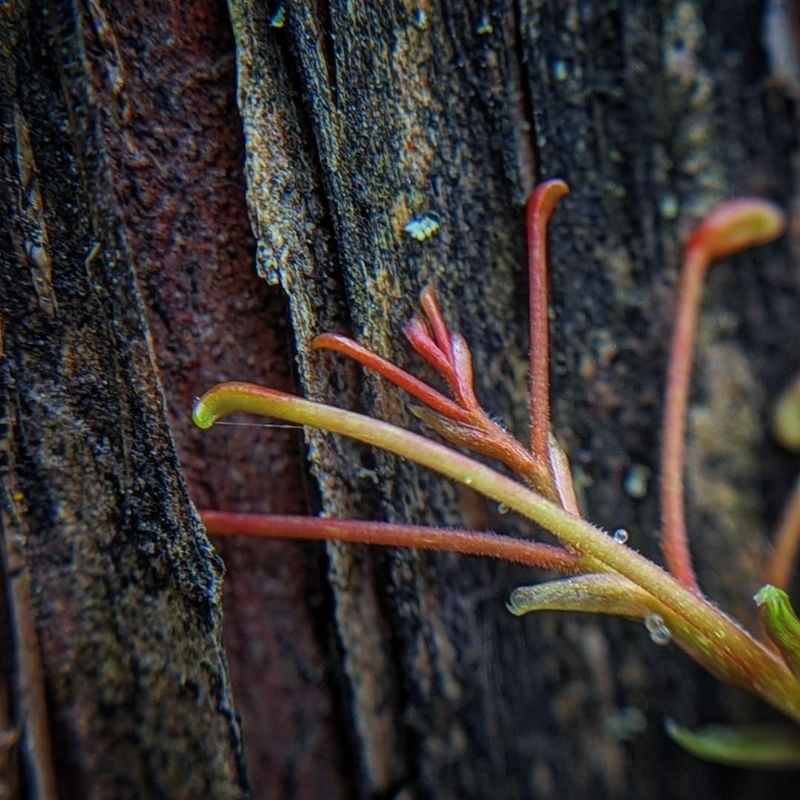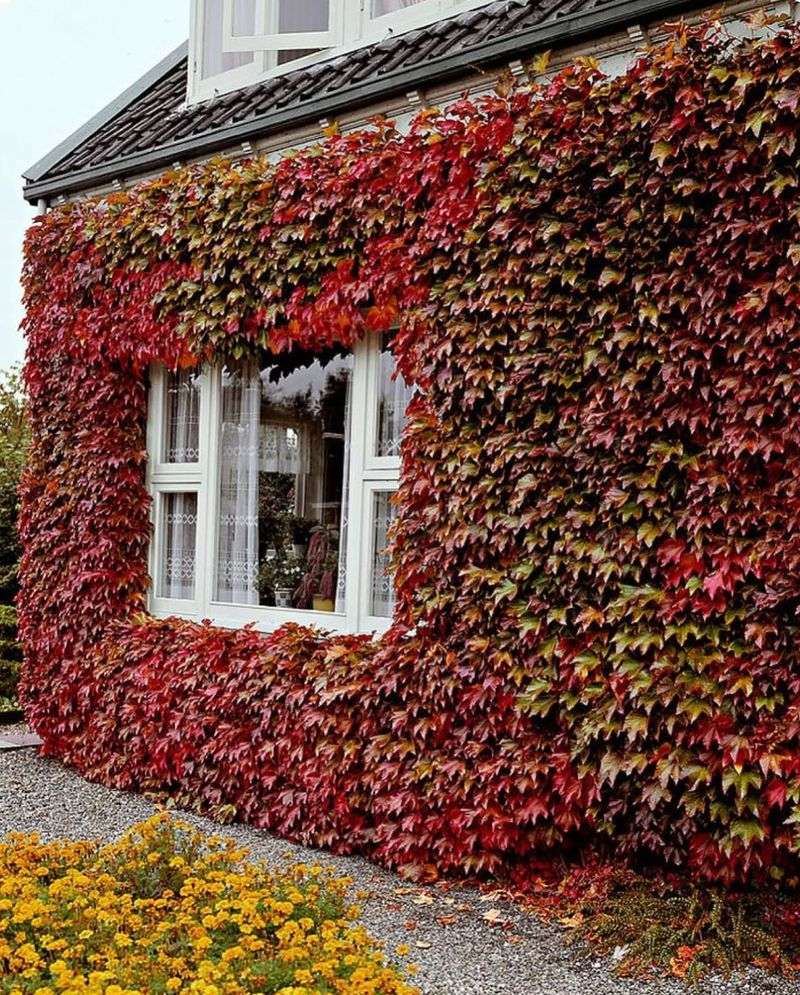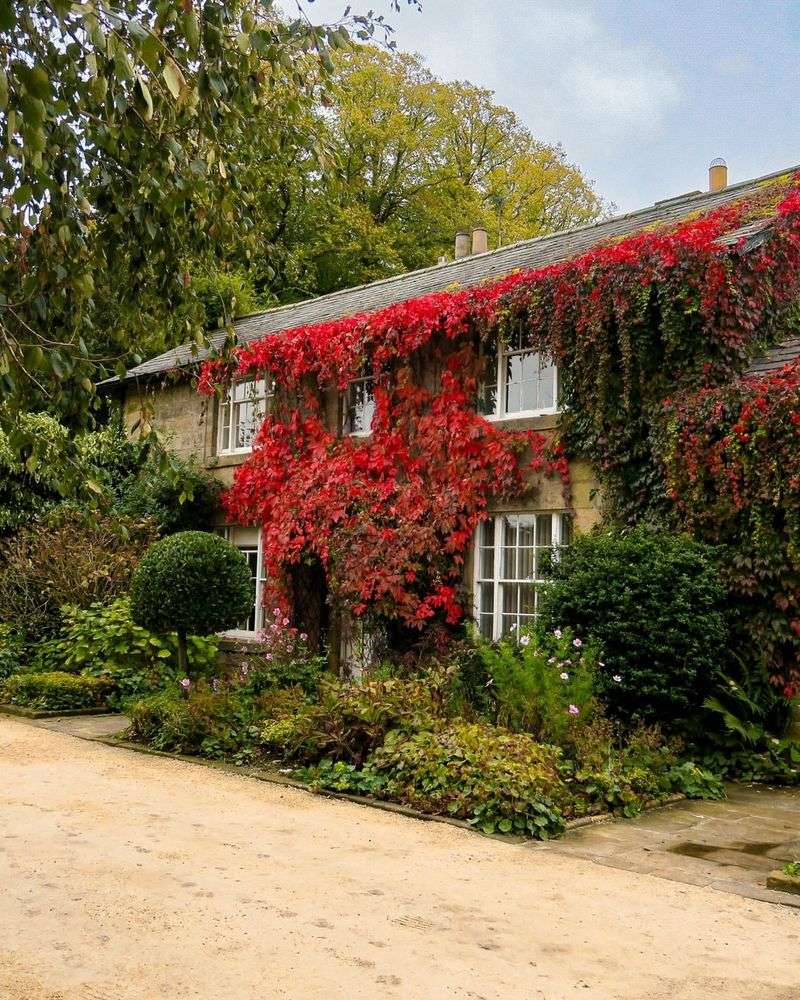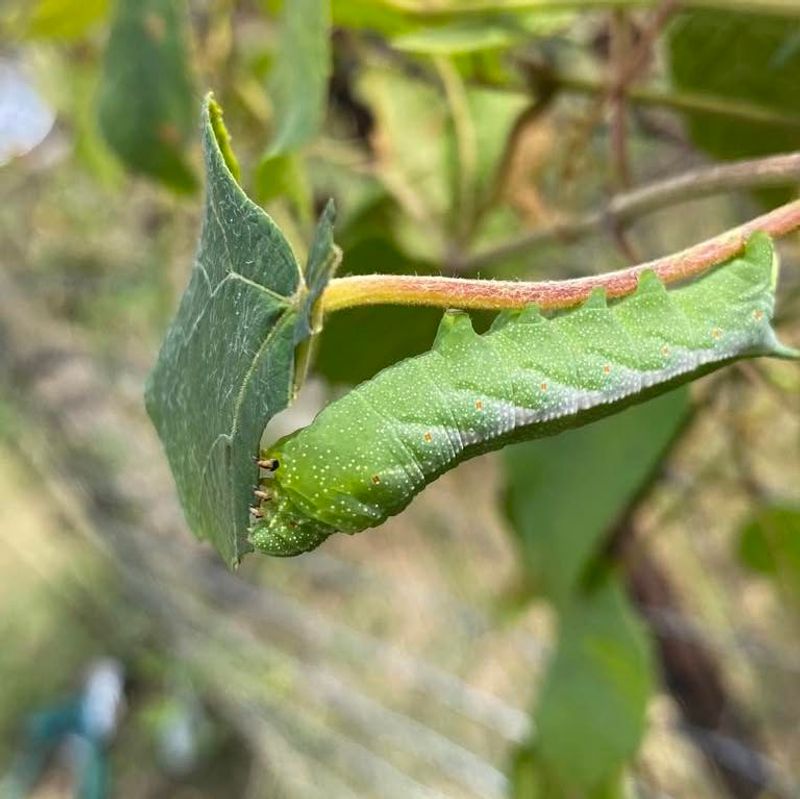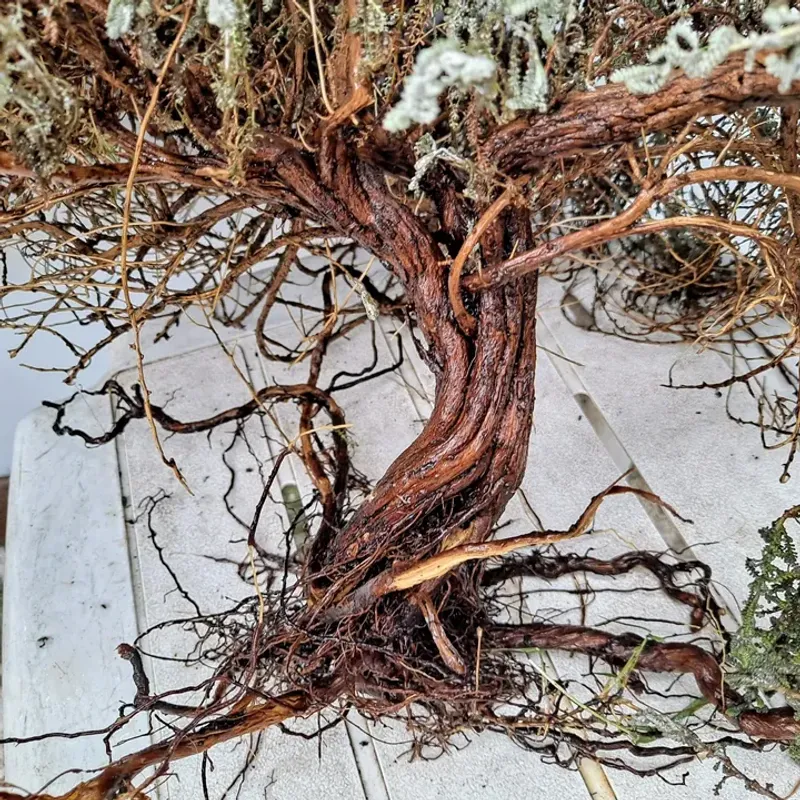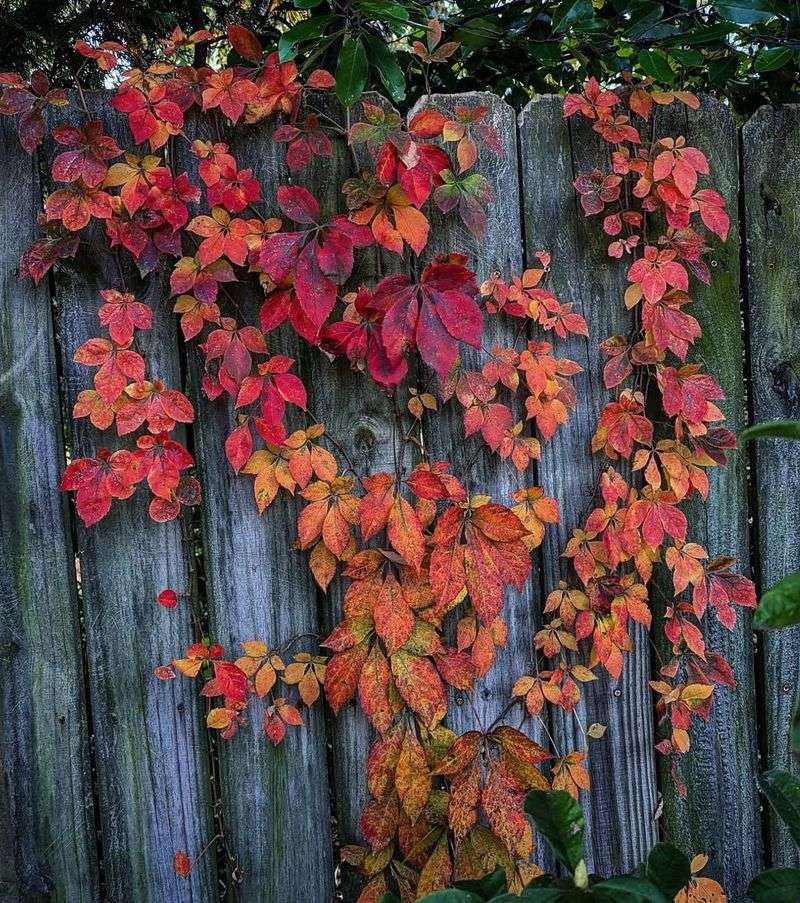A quiet backyard often feels like a sanctuary, a place where calm settles over every stone and fence post.
Yet some homeowners discover a bold force that refuses to stay put, a climber that treats every boundary as an open invitation.
One moment the vine hugs a corner, the next it races across a shed roof, darts behind a gutter, then pops up on the far side of a yard as if by magic.
Neighbors swap stories about sudden takeovers, and every tale grows a little taller, but the theme stays the same: the Virginia Creeper acts as if it owns the place.
Still, admiration often mixes with exasperation. After all, a plant with such drive brings both charm and challenge.
Virginia Creeper Climbs Using Tiny Adhesive Disks
Unlike other vines that wrap around objects or use thorns to grab hold, Virginia Creeper has a special trick up its leaves.
At the end of each tendril, tiny adhesive disks form that stick to almost any surface.
These little pads work like natural glue, allowing the plant to climb brick walls, wooden fences, and even smooth surfaces like painted siding.
Homeowners often notice these vines creeping up the sides of their homes without any support structure.
The adhesive disks are so strong that removing the vine can leave marks or residue behind.
Once attached, the plant holds on tight through wind, rain, and storms.
This climbing ability makes Virginia Creeper incredibly successful at spreading. It does not need anything to wrap around like other vines do.
The plant simply reaches out, touches a surface, and sticks. Before you know it, the vine has covered an entire wall or fence section, moving from one spot to the next with remarkable speed and determination.
The Plant Produces Berries That Birds Love To Eat
Come late summer and fall, Virginia Creeper produces clusters of small, dark blue berries that look almost black.
Birds absolutely adore these berries and will flock to any vine loaded with fruit.
Robins, woodpeckers, and other native bird species feast on them throughout the season.
While birds enjoy these berries safely, humans and pets should never eat them.
The berries contain oxalic acid, which can cause stomach upset and other health problems if consumed.
Many homeowners appreciate that the berries attract wildlife, but they also worry about curious children or pets trying to taste them.
The real issue for homeowners is how birds help spread Virginia Creeper everywhere.
After eating the berries, birds fly to other parts of the yard or neighborhood and drop the seeds in their droppings.
Those seeds sprout easily, creating new vines in unexpected places.
Before long, Virginia Creeper pops up in flower beds, under shrubs, and along property lines, thanks to helpful birds doing what comes naturally.
Fall Foliage Turns A Stunning Bright Red Color
One reason homeowners tolerate Virginia Creeper despite its aggressive growth is the spectacular fall display it provides.
When autumn arrives, the green leaves transform into brilliant shades of red, crimson, and burgundy.
Entire walls, fences, and trees can become covered in this fiery color, creating a stunning seasonal show.
The transformation happens gradually as temperatures drop and days grow shorter.
Some leaves turn earlier than others, creating a mix of green and red that looks painted.
By peak fall season, the vine becomes one solid mass of red that catches everyone’s attention.
Photographers and nature lovers often seek out Virginia Creeper in autumn for its beauty.
The contrast between the red leaves and brick buildings or wooden fences creates picture-perfect scenes.
However, homeowners must remember that this beautiful display comes with a price.
The same vine that looks gorgeous in October might be strangling your favorite shrub or pulling down your gutters by November – beauty and beast live together in this native plant.
Virginia Creeper Often Gets Confused With Poison Ivy
Many people panic when they spot Virginia Creeper growing in their yard because they mistake it for poison ivy.
Both plants are vines that climb and spread quickly, which adds to the confusion.
However, knowing the difference can save you from unnecessary worry and wrong removal methods.
The easiest way to tell them apart is by counting the leaves.
Virginia Creeper has five leaflets arranged like fingers on a hand, while poison ivy always has three leaflets.
Remember the old saying: leaves of three, let it be; leaves of five, let it thrive.
This simple rhyme helps people identify which plant they are dealing with.
Virginia Creeper does not cause the itchy rash that poison ivy is famous for.
You can touch it, pull it, and handle it without breaking out in blisters.
Some people might experience mild skin irritation from the sap, but it is nothing compared to poison ivy’s nasty oils.
Still, homeowners should wear gloves when removing any vine, just to be safe and avoid any potential reactions.
The Vine Can Damage Buildings And Structures Over Time
What starts as a small, harmless vine can eventually cause serious problems for homeowners.
Virginia Creeper’s adhesive disks and aggressive growth pattern mean it can work its way under siding, roof shingles, and window frames.
Once the tendrils get into small cracks or gaps, they expand and can cause wood to rot or paint to peel.
The weight of a mature vine can also become significant.
When Virginia Creeper covers an entire wall, all those leaves, stems, and woody branches add up.
This extra weight can pull on gutters, loosen boards, and even damage mortar between bricks.
Older homes with existing structural issues are especially vulnerable.
Moisture is another concern when vines grow thick against buildings.
The dense foliage traps humidity against walls, preventing proper air circulation.
This creates perfect conditions for mold, mildew, and wood decay.
Regular inspection and maintenance become necessary when Virginia Creeper grows near your home.
Many homeowners learn the hard way that controlling this vine early prevents expensive repairs later on.
Native Plant Status Makes It Valuable For Local Wildlife
Despite its aggressive nature, Virginia Creeper serves important roles in local ecosystems.
As a native plant, it has evolved alongside Virginia’s wildlife for thousands of years.
Many insects depend on it for food and shelter, including butterfly caterpillars and native bees that visit its small flowers in early summer.
Beyond birds eating the berries, other animals benefit from Virginia Creeper too. Deer occasionally browse the leaves, though they prefer other plants.
Small mammals use dense vine growth as hiding spots from predators, even beneficial insects like ladybugs and lacewings live among the foliage, helping control garden pests.
Conservation experts often encourage homeowners to keep some native plants, even aggressive ones, in less manicured areas of their property.
A patch of Virginia Creeper growing on a back fence or along a property line can support biodiversity without threatening your home or garden.
The trick is finding balance between appreciating its ecological value and preventing it from taking over everything.
Controlled Virginia Creeper can be an asset rather than just a nuisance vine.
The Plant Spreads Through Underground Roots And Runners
Pulling up visible vines only solves part of the Virginia Creeper problem.
Underground, this plant develops an extensive network of roots and runners that spread in all directions.
These underground stems, called rhizomes, can travel several feet away from the parent plant before sending up new shoots.
Homeowners often cut down a vine completely, only to find new growth popping up weeks later in the same spot or nearby areas.
Those persistent roots store energy and wait for the right conditions to sprout again – even small root fragments left in the soil can generate entirely new plants.
This underground spreading ability makes Virginia Creeper extremely difficult to eliminate once established.
The plant essentially clones itself through these runners, creating a connected network beneath your yard.
One original vine can spawn dozens of offspring across your property.
Effective control requires digging up roots, applying targeted herbicides, or persistent removal of new growth over multiple seasons.
Many Virginia homeowners simply accept that Virginia Creeper will always be present and focus on managing it rather than complete eradication.
Regular Pruning Keeps Virginia Creeper Under Control
Successful Virginia Creeper management requires commitment and regular attention throughout the growing season.
Pruning becomes your best defense against this aggressive spreader.
By cutting back new growth every few weeks during spring and summer, you prevent the vine from getting out of hand and reaching places you want to protect.
Start by establishing clear boundaries for where you will allow Virginia Creeper to grow and where it must not go.
Maybe you enjoy it covering one section of fence but want it away from your house.
Check those boundary areas weekly during peak growing season and snip any tendrils that cross the line.
Always wear gloves when working with Virginia Creeper, even though it is not poisonous like its cousin poison ivy.
Use sharp pruning shears or loppers for clean cuts that heal quickly.
Remove cut vines from your property rather than leaving them on the ground, as some pieces might take root if conditions are right.
Think of Virginia Creeper management as an ongoing relationship rather than a one-time project.
With consistent effort, you can enjoy its benefits while keeping it from spreading past every corner.


